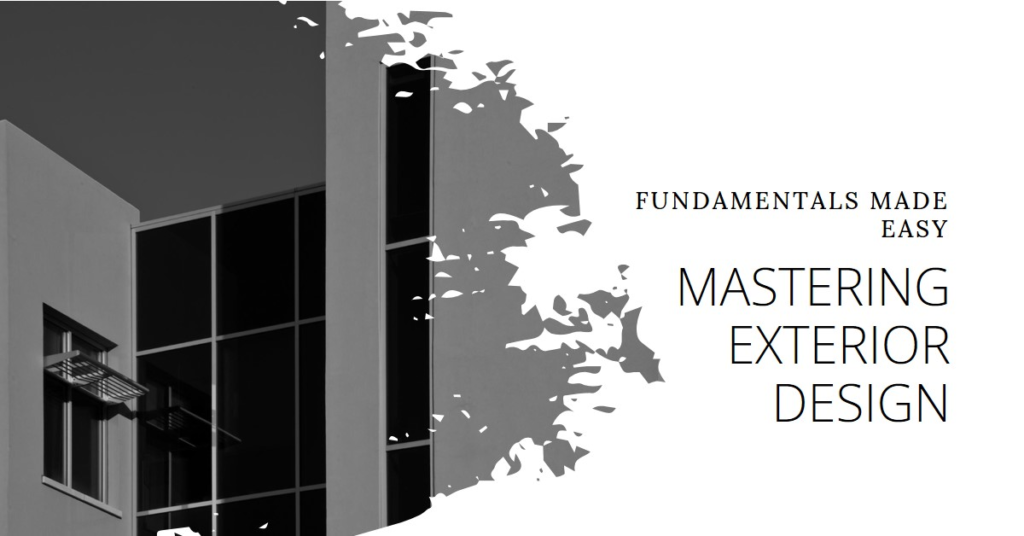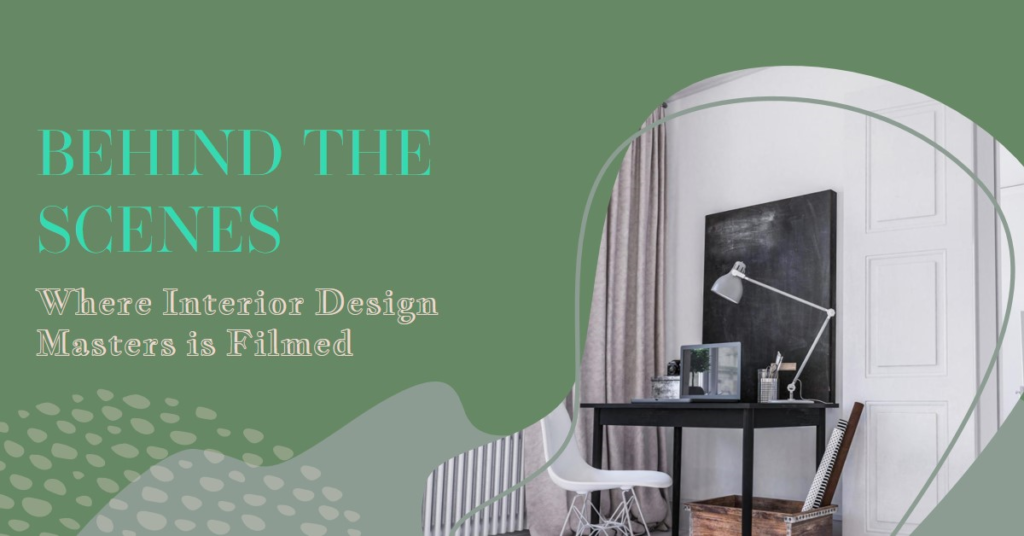
Table of Contents
- Introduction:
- Understanding the Role of Exterior Design:
- Embracing Architectural Styles:
- Balancing Form and Function:
- Mastering Color Theory:
- Incorporating Texture and Materials:
- Enhancing Curb Appeal with Landscaping:
- Integrating Outdoor Living Spaces:
- Focusing on Entryways and Focal Points:
- Implementing Sustainable Design Practices:
- Staying Updated with Trends and Innovations:
- Conclusion: Mastering Exterior Design Fundamentals
Introduction:
Exterior design plays a crucial role in defining the aesthetic and functional appeal of any building. Whether you’re designing a residential home, a commercial property, or a public space, understanding the fundamentals of exterior design is essential. This comprehensive guide will help you master the essential principles and techniques needed to create visually stunning and harmonious exteriors. Let’s explore the world of exterior design, step by step, with creative insights and professional guidance.
Understanding the Role of Exterior Design:
Exterior design is more than just about appearances; it encompasses the entire experience of a building’s outer shell. It involves the integration of architecture, landscape, and urban planning to create a cohesive and inviting environment.
The primary goal of exterior design is to enhance the curb appeal and functionality of a property. A well-designed exterior can significantly increase the value of a building, attract potential buyers or tenants, and create a lasting impression. By understanding the role of exterior design, you can begin to appreciate its impact on both aesthetics and practicality.
Embracing Architectural Styles:
One of the first steps in mastering exterior design is to familiarize yourself with various architectural styles. Each style has its own set of characteristics, materials, and design principles that influence the overall look and feel of a building.
From the timeless elegance of Classical architecture to the sleek lines of Modernism, understanding different architectural styles will help you make informed design choices. For instance, a Mediterranean-style home may feature stucco walls, red tile roofs, and arched windows, while a Victorian-style house might showcase intricate woodwork, steep gables, and vibrant colors. Embracing these styles will enable you to create exteriors that are both authentic and visually appealing.
Balancing Form and Function:
A successful exterior design strikes a balance between form and function. While aesthetics are important, the functionality of a building’s exterior must not be overlooked. This involves considering aspects such as durability, maintenance, and climate adaptability.
For example, selecting weather-resistant materials is crucial for buildings in areas prone to harsh weather conditions. Additionally, incorporating practical elements like energy-efficient windows, proper drainage systems, and sustainable landscaping can enhance the usability and longevity of the exterior. By balancing form and function, you ensure that your design is not only beautiful but also practical and sustainable.
Mastering Color Theory:
Color plays a pivotal role in exterior design. The right color palette can transform a building, highlighting its architectural features and creating a harmonious look. Understanding color theory and how different hues interact is essential for creating visually appealing exteriors.
Start by considering the surrounding environment and the building’s purpose. Neutral tones like beige, gray, and white can create a timeless and elegant look, while bold colors like red, blue, and green can make a statement and add personality. Additionally, consider the psychological impact of colors; for instance, blue can evoke calmness and trust, while yellow can convey warmth and energy. Mastering color theory allows you to make strategic choices that enhance the overall design.
Incorporating Texture and Materials:
Texture and materials add depth and character to exterior design. The choice of materials can significantly impact the visual and tactile experience of a building’s exterior. Common materials include brick, stone, wood, metal, and glass, each offering unique properties and aesthetic appeal.
Combining different textures can create a dynamic and interesting facade. For example, pairing rough stone with smooth glass can add contrast and visual interest. Additionally, the use of sustainable materials and eco-friendly practices is becoming increasingly important in modern exterior design. By thoughtfully selecting and combining materials, you can create exteriors that are not only beautiful but also environmentally conscious.
Enhancing Curb Appeal with Landscaping:
Landscaping is an integral part of exterior design that can significantly enhance curb appeal. Well-designed landscaping can complement the architecture, create a welcoming atmosphere, and provide functional outdoor spaces.
Consider incorporating elements like trees, shrubs, flowers, and hardscaping features such as walkways, patios, and retaining walls. The choice of plants should be based on the climate, soil conditions, and maintenance requirements. Additionally, integrating lighting into the landscape design can highlight key features and create a magical ambiance at night. By paying attention to landscaping, you can create a cohesive and inviting exterior that enhances the overall property.
Integrating Outdoor Living Spaces:
Outdoor living spaces are becoming increasingly popular in exterior design. These spaces extend the usable area of a property and provide opportunities for relaxation, entertainment, and connection with nature.
Consider designing patios, decks, pergolas, and outdoor kitchens that seamlessly blend with the architecture and landscape. Furniture, lighting, and accessories play a crucial role in defining these spaces and making them functional and inviting. By integrating outdoor living spaces, you not only enhance the usability of the exterior but also create areas that encourage outdoor activities and social gatherings.


Focusing on Entryways and Focal Points:
The entryway is often the focal point of a building’s exterior. A well-designed entryway can create a welcoming first impression and set the tone for the rest of the property. Additionally, other focal points such as windows, balconies, and architectural features can draw attention and add character.
Consider elements like the front door design, porch, lighting, and landscaping around the entryway. A grand entryway with a beautifully crafted door, flanked by potted plants and accent lighting, can create an inviting and memorable entrance. Similarly, strategically placing focal points throughout the exterior can enhance the overall design and create visual interest.
Implementing Sustainable Design Practices:
Sustainability is a key consideration in modern exterior design. Implementing sustainable practices not only benefits the environment but also adds value to the property and reduces long-term maintenance costs.
Consider using eco-friendly materials, incorporating energy-efficient systems, and designing for passive solar gain. Green roofs, rainwater harvesting systems, and native plant landscaping are examples of sustainable design elements that can be integrated into exterior design. By prioritizing sustainability, you create exteriors that are environmentally responsible and future-proof.
Staying Updated with Trends and Innovations:
The field of exterior design is constantly evolving, with new trends and innovations emerging regularly. Staying updated with the latest developments can inspire your designs and keep them relevant and fresh.
Follow design blogs, attend industry conferences, and participate in professional networks to stay informed about the latest trends and technologies. Innovations such as smart home integration, advanced building materials, and cutting-edge construction techniques are shaping the future of exterior design. By embracing these trends and innovations, you ensure that your designs are at the forefront of the industry.
Conclusion: Mastering Exterior Design Fundamentals
Mastering the fundamentals of exterior design requires a combination of knowledge, creativity, and practical skills. By understanding the role of exterior design, embracing architectural styles, balancing form and function, mastering color theory, incorporating texture and materials, enhancing curb appeal with landscaping, integrating outdoor living spaces, focusing on entryways and focal points, implementing sustainable practices, and staying updated with trends, you can create exteriors that are both beautiful and functional.
As you continue to refine your skills and explore new ideas, you’ll develop a deeper appreciation for the art and science of exterior design, ultimately transforming spaces into stunning and harmonious environments.


